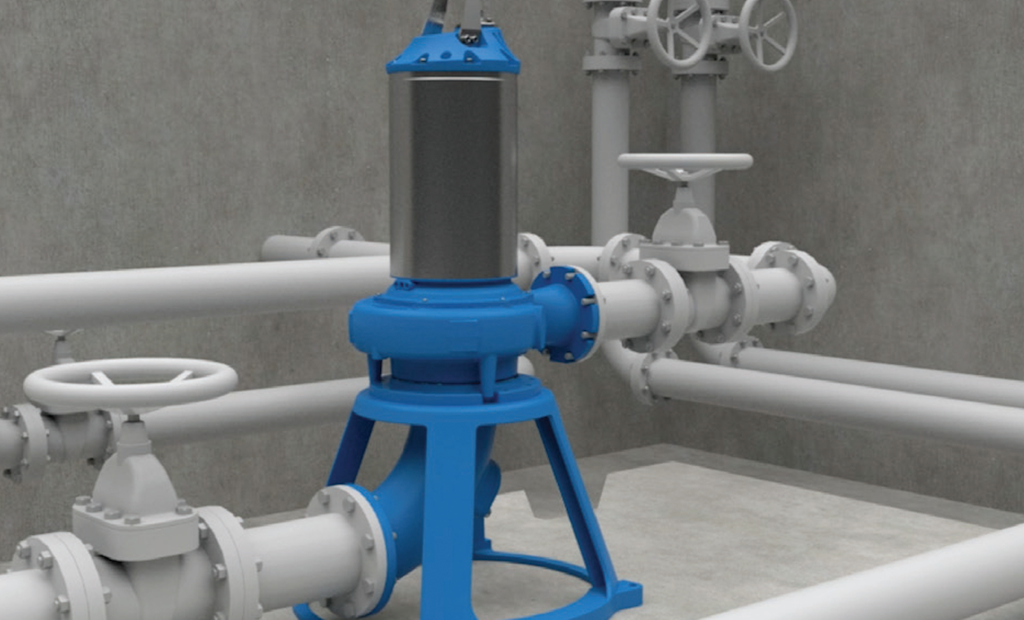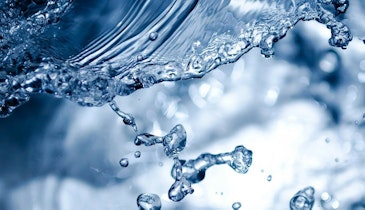Interested in Pumps?
Get Pumps articles, news and videos right in your inbox! Sign up now.
Pumps + Get AlertsTraditionally in the solids handling pump market, there are three main installation categories: submersible pumps, dry pit pumps, and dry-run submersible pumps. Submersible and dry pit pumps have both held their respective corners of the market for quite some time, but the dry-run submersible pump is a newer design that merges the two technologies and the benefits of both. These pumps have become more popular as environments change and there grows a greater need for flood-proof motors and versatility in installations.
Dry pit pumps
Dry pit pumps are typically end-suction style pumps with a NEMA AC induction motor, and they are meant to operate in a completely dry environment. The pump can be built directly on the motor shaft, or there can be a coupling between the pump shaft and motor shaft. If they are installed below ground, they are often accompanied by a small sump pump to collect and remove any water that does make its way into the installation. These motors cannot be submerged without damage. If the station they are located in floods, the motors must be either repaired or replaced, which can be time consuming and costly. There is a type of motor called “immersible,” but these can only be submerged for a short period of time without damage, and typically cannot operate while submerged. Thus, these pumps are not ideal for any installation that is at risk of flooding, whether from extreme weather events, or from failures like force main breaks, valve failures or pump failures.
True submersible pumps
Submersible pumps are meant to operate in a submerged environment. They are typically rated for up to 65 feet of submergence, and often feature an oil-filled or air-filled motor. The pump end is built directly on the motor shaft and all internal components are sealed from the surrounding fluid. The pumps utilize the surrounding fluid for cooling and thus have a minimum submergence requirement. This submergence requirement varies based on the duty cycle and fluid being pumped, but a good rule of thumb is for the entire motor to be submerged for continuous operation. Without the minimum submergence requirement, the motor may not cool properly and may be susceptible to damage. These pumps are susceptible to heavy debris and FOG buildup, as they are unable to pump the wet well down far enough to clean it. They are also in danger of overheating in the cases where the fluid is drawn down too far.
Dry-run submersible pumps
Last, we have dry-run submersible pumps, which combine the benefits of both previous technologies. They are very similar to the submersible pumps, where the pump end is built directly on the motor shaft, with all internal components sealed from the external environment. The motors are typically air filled, but they can be oil filled in some circumstances. The motor can either be derated to run cooler or could include a cooling jacket, which circulates a cooling fluid around the air-filled motor housing. This fluid can be clean water, pump fluid pulled from the discharge of the pump, or a glycol-water mix. As a result of these cooling measures, the pump does not need to be submerged to ensure that the motor is running at an appropriate temperature. Therefore, the pump can operate in a variety of installations – dry pit, fully submerged or partially submerged, which removes the danger of overheating when the fluid is drawn down below the motor. Thus, these pumps typically have a lower minimum submergence requirement for continuous operation. When designing new installations, a lower submergence leads to a shallower wet well and thus a less expensive project.
Because of the submersible capability in all installations, this pump is flood-proof. This can be advantageous in flood-prone regions and in instances of accidental flooding (valve failure, force main break, etc.). Not only will the pump not be damaged but it will continue to operate, which may help to mitigate the flooding, minimizing both pump downtime and repair costs. Because a dry-run submersible is a close-coupled design (pump built on the motor shaft), it can also be used where space is at a premium. Traditional dry-pit pumps are often much larger and require more space for installation. Traditional dry pits also often require a seal flush and a pressurized seal chamber, which can be costly in installations. Because the seal chamber in a dry-run submersible is completely sealed, no external piping is required, nor is the extra cost.
Because a dry-run submersible can be installed in a variety of applications, it is the most versatile option for wastewater pump installations — both in new installations and retrofitting existing pumps. Using a dry-run submersible can maximize the performance of a station while creating savings during installation and throughout its operational life.
Visit the Crane Pumps & Systems Storefront





